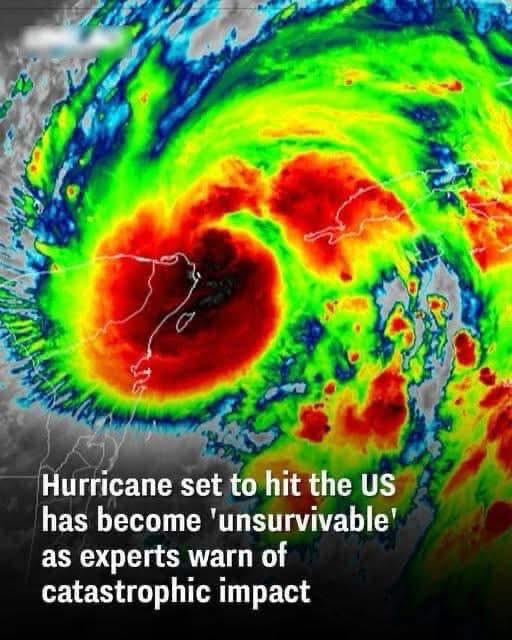The National Hurricane Center (NHC) has officially started issuing advisories for Potential Tropical Cyclone Nine, a developing weather system that is expected to strengthen into Tropical Storm Helene later today or tonight. Meteorologists are closely monitoring its progress as it shows signs of becoming a significant threat to parts of the southeastern United States in the coming days.

The Big Picture
According to the latest forecast, Helene is likely to form in the northwestern Caribbean Sea before making its way toward the Florida Panhandle and West Central Florida. The system is expected to intensify steadily, with models indicating it could reach hurricane status in the Gulf of Mexico. Current projections suggest it may achieve Category 2 or even Category 3 strength, which means sustained winds could reach between 96 and 129 miles per hour. This would make it a potentially dangerous storm capable of causing widespread damage.
If this forecast holds true, residents across Florida, Georgia, and South Carolina should prepare for a broad range of impacts. These could include damaging winds strong enough to topple trees and power lines, a life-threatening storm surge along the coast, and torrential rainfall that could lead to flash flooding. Such conditions could cause significant disruptions to daily life, including travel delays, power outages, and possible evacuation orders in vulnerable coastal areas.
Current Conditions and Development
At the moment, the system remains somewhat disorganized. The NHC reports that the weather disturbance consists of scattered thunderstorms in the northwestern Caribbean, but these storms have not yet developed a well-defined center of circulation. However, forecasters believe that this will change soon—possibly within hours. Once the thunderstorms consolidate into a more organized system, Helene will officially be classified as a tropical storm.
Meteorologists expect the storm to move through the Yucatán Channel, the narrow stretch of water between Mexico’s Yucatán Peninsula and the western tip of Cuba. This path will take it into the warm waters of the Gulf of Mexico, where sea surface temperatures are currently more than favorable for rapid intensification. These conditions, combined with relatively low wind shear, could allow Helene to strengthen quickly, potentially becoming a hurricane within a short time after entering the Gulf.
Preparedness and Caution Urged
Even though Helene is still in its formative stages, emergency management officials are urging residents in the projected path to start making preparations now. Waiting until the storm has fully developed could leave little time to react if evacuation orders are issued or supplies run low. This includes stocking up on essentials like water, non-perishable food, medications, batteries, and fuel, as well as making sure important documents are stored safely.
Coastal communities, in particular, should pay close attention to storm surge forecasts. Storm surge—the abnormal rise of seawater above normal tide levels—can be one of the most dangerous aspects of a hurricane, often causing more fatalities than wind itself. With the possibility of Helene reaching major hurricane strength, low-lying areas along the Gulf Coast could face severe flooding.
Potential Impacts Across the Southeast
While the exact track is still uncertain, forecast models currently indicate that Florida will face the most direct impacts. However, even areas far from the storm’s center could experience hazardous conditions. Heavy rainfall could extend into Georgia and South Carolina, leading to inland flooding, especially in regions with saturated soil from recent storms. Strong winds may also impact areas well away from the coastline, knocking out power and damaging property.
The NHC stresses that forecast cones represent possible paths of the storm’s center, but hazards often extend hundreds of miles from that center. This means that people outside the cone should not assume they are safe from Helene’s effects.
What Happens Next
If the storm follows the projected path, the next 24 to 48 hours will be crucial. Once Helene becomes a tropical storm, forecasters will have more data from reconnaissance aircraft, which will help refine intensity and track predictions. By the time it enters the Gulf of Mexico, the system will likely be better organized, and its potential threat level will become clearer.
In the meantime, officials recommend that residents in potentially affected areas keep up with the latest updates from trusted sources like the NHC and local weather services. It’s also wise to review emergency evacuation routes and ensure that any necessary travel arrangements can be made quickly if conditions deteriorate.
While there’s still some uncertainty, the combination of warm waters, favorable atmospheric conditions, and the storm’s projected path toward highly populated coastal areas means that Helene could become a significant event. The coming days will determine whether it remains a strong tropical storm or grows into a powerful hurricane capable of delivering widespread and potentially life-threatening impacts.





